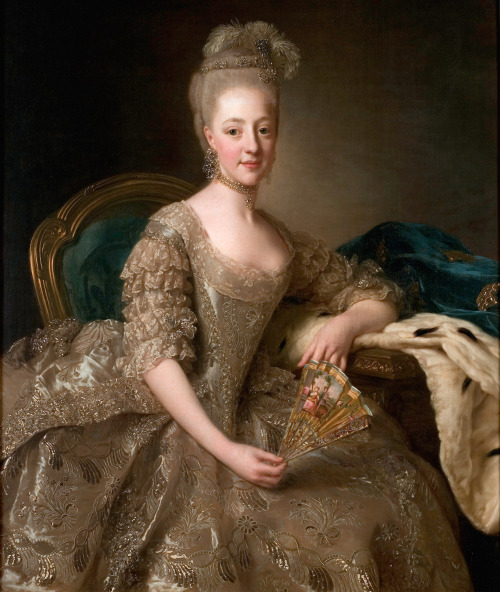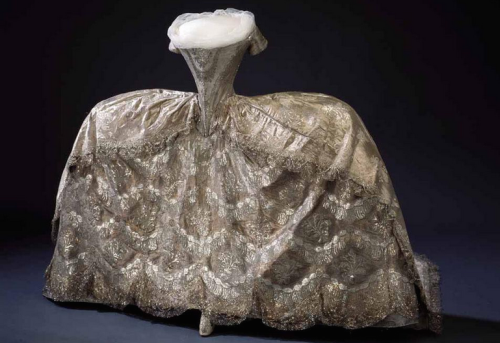#hedvig elisabeth charlotta
“My neck and my bosom is white and well shaped. My figure is quite good and fairly well proportioned and my stature straight (…). My hands are awful as I didn’t want to wear gloves as a child, but they are small and fairly well shaped. My legs are straight and, as my feet, nicely shaped, yes I can claim it’s the best part of me” (from the diary of Hedvig Elisabeth Charlotta, quoted in the book “Underkläder: en kulturhistoria” from 2008)
Portrait:Hedvig Elisabeth Charlotta of Holstein-Gottorp, later Queen of Sweden and Norway, painted in 1775 by Alexander Roslin. Nationalmuseum Stockholm ( X).
Attire:The portrait was painted one year after her wedding to prince Charles in July 1774, and it’s said to depict her in her wedding dress. How do we know? Because that very same wedding dress has survived and can today be seen in the collection of Livrustkammaren in Stockholm.
Post link
Book review; “Barnbruden” (”The Child Bride”), by Anna Laestadius Larsson.
“It is 1774 and the royal flagship Sofia Albertina is approaching the Swedish coast. Aboard is Hedvig Elisabeth Charlotta, fifteen years old and the youngest royal bride in swedish history.
The popular noble lady Sophie von Fersen silently curses her mother who has forced with her on the journey. She does not want to attend to a stubborn german brat. In her fantasies she is at a ball in the arms of prince Fredrik.
In Stockholm king Gustav III and his court prepares a grand welcome. The expectations of the girl are high. She is to marry the king’s brother Karl and give the country the heir they’ve long awaited.
And far below the castle’s beautiful parade apartments the Pottiechild awakes - the mute girl who tends to other’s shit.”
I personally tend to read more during the summer than any other time of the year, so this year I finished this book in just 5 days. Not only because it had a good flow, but because it never ceased to be exciting. And with the great lack of swedish period dramas, this book is a jewel.
The book follows the perspective of Hedvig Elisabeth Charlotta, duchess of Södermanland and later queen of Sweden; Sophie von Fersen, the sister of the famous Axel von Fersen; and Pottungen (’the Pottiechild’), a fictional 10- year old girl who tends to the aristocrats’ chamber pots. A few other characters also narrate the story, but it is these three who are the main focus of the story, whereas the others simply serve a short cameo to fill in the dots.
It is interesting to follow the thoughts of these women, or at least as Laestadius Larsson puts them. The story is largely based on the diary and correspondence of Charlotta, but L. L admits that certain changes and liberties have been taken, which is of course common when it comes to writing about historical people like this. However, certain details stand out to me in the historical context it is meant to represent; just as an example, the author seems to have misunderstood the intentions of Axel von Fersen senior when he refused Sophie a marriage to prince Fredrik, and I disapprove of how Gustav III’s marriage to queen Sofia Magdalena is represented.
But these are just details that can be overlooked with the otherwise nearly flawless picture L.L paints of 18th century Sweden. The class differences and contemporary political tensions are well explained, all the while woven into an entertaining and Coppola-styled story.
While this book is sadly only available in swedish at the moment, I do recommend it - if not for the historical accuracy, then for the romantical affection Charlotta shows Sophie in her letters and the three-dimensional represantation of Axel von Fersen and his contemporaries.
Post link



